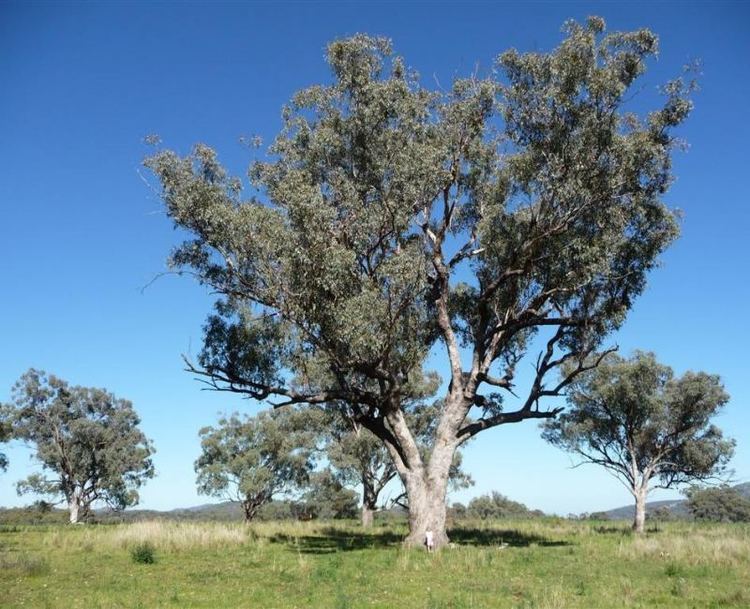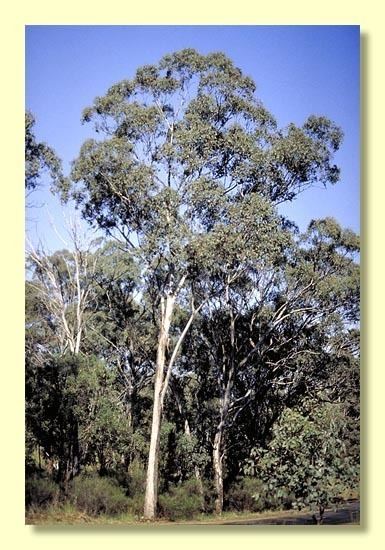Genus Eucalyptus Rank Species | ||
 | ||
Similar Eucalyptus blakelyi, Eucalyptus melliodora, Eucalyptus microcarpa, Eucalyptus macrorhyncha, Eucalyptus goniocalyx | ||
Eucalyptus albens known as the white box is a common eucalyptus tree of the western slopes and plains of New South Wales and adjacent areas in Queensland and Victoria. An isolated population grows in the southern Flinders Ranges in South Australia.
Contents
- Taxonomy
- Description
- Distribution and habitat
- Critically Endangered Woodland status and controversy
- Uses
- References

Taxonomy

George Bentham described the white box in 1867 from material collected by botanist and explorer, Allan Cunningham, along the Macquarie River. Joseph Henry Maiden had regarded it as a subspecies of Eucalyptus hemiphloia in 1904. It is related to grey box (E. moluccana) and inland grey box (E. microcarpa). Hybridization with grey box has been reported in the Hunter Valley. The scientific and common names is derived from the white deposits over the leaves and gumnuts, while the epithet "box" comes from the box-like tesselated pattern in the bark.
Description

Reaching 15–25 metres (49–82 ft) high, the white box has a branched spreading crown with a straight trunk for around half its total height. Its trunk may reach 0.5 metres (1 ft 8 in) diameter at breast height. It has fibrous pale grey bark. The juvenile leaves are round and pale. The white flowers appear in the autumn from March to May.
Distribution and habitat
The white box is a tree of grassy eucalypt woodlands on plains or gently sloping areas.

It is associated with inland grey box, fuzzy box (E. conica), yellow box (E. melliodora), Pilliga grey box (E. pilligaensis), red ironbark (E. sideroxylon), narrow-leaved ironbark (E. crebra), Blakely's red gum (E. blakelyi), apple species (Angophora), black cypress (Callitris endlicheri), white cypress (Callitris glaucophylla), kurrajong (Brachychiton populneus) and wattles (Acacia) species.
Critically Endangered Woodland status and controversy
Before European settlement, white box was the dominant species found in large continuous forests stretching from Southern Queensland, through Western NSW and Victoria known as White Box Yellow Box Blakely's (Red Gum) Woodlands. Box-Gum Grassy Woodland is now listed as a “critically endangered” ecological community under the Australian Federal EPBC Act and its management is bound to the Matters of National Environmental Significance guidelines. When listed as critically endangered in 2006, the Australian Government estimated that as little as 0.1% of the original White-Box Grassy Woodland exists in pristine or near pristine condition, and these examples are noted as being extremely rare, and usually quite small in size. An example is the Leard Forest in Northern NSW, which is regarded as the largest White-Box Grassy Woodland that fits the critically endangered criteria. Due to its significance as one of the few remaining examples of these ecosystems, the Leard Forest White Box woodland has been subject of much debate and community opposition to open cut coal mining projects over recent years. As such, questions have been raised regarding the commitment of the Australian Government to its own EPBC Act and enforcement of Matters of National Environmental Significance guidelines in relation to the White Box woodlands and the flora and fauna that depend on these ecosystems.
Uses
The heavy and hard wood is used for railway sleepers and fence posts. The flowers produce nectar for the honey industry.
